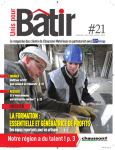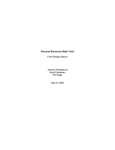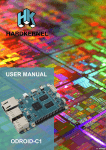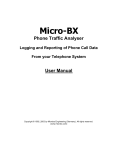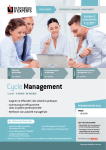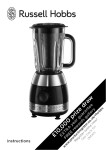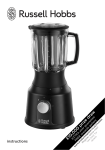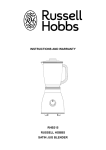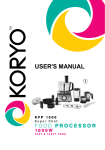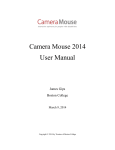Download 5 Managing the Academic Environment
Transcript
5 Managing the Academic Environment Upon completing “Chapter Five—Managing the Academic Environment,” students will be able to: 1. Identify their personal LASSI Selecting Main Idea (SMI) scale: ”identifying the important theme(s) in a body of information.” a. High Score: Ability to select critical information from extraneous content—important concepts from the unimportant. b. Low Score: Need to learn how to identify important information and focus the attention on appropriate material. 2. Demonstrate two strategies that can be used to integrate textbook information and lecture notes. 3. Identify a strategy for increasing the effectiveness of the laboratory experience. 4. Identify a strategy for effectively studying for mathematic classes. “My favorite definition of success is that it is a state of mind combined with a state of readiness. You can have one and be a flop; if you have both, you’ll win every time.” – Carolyn Warner 137 Kendall Hunt / Reeves: College - What You Need to Know and How to Succeed 61453 CH05_Reeves.indd 137 Gilson Graphics Iowa 8/4/14 4:50 PM 138 College - What You Need to Know and How to Succeed Image © iQoncept, 2014. Used under license from Shutterstock, Inc. SELECTING MAIN IDEA (SMI) SCALE “Effective and efficient studying requires that the student be able to select the important material for in-depth attention. Most lectures, discussions, and textbooks contain redundant material, extra examples, and many supporting details to help explain what is being taught or presented. A major school task involves separating out the important from the unimportant or simply didactic information that does not have to be remembered. If a student cannot select out the critical information then the learning task becomes complicated by the huge amount of material the individual is trying to acquire. Lacking this skill also increases the likelihood that the student will not have enough time to study everything that must be covered. “Student’s scores on this scale measure their skills at selecting important information to concentrate on for further study in either classroom lecture or autonomous learning situations. Students who score low on this measure need to learn more about how to identify important information so that they can focus their attention and information processing strategies on appropriate material.” (LASSI User’s Manual, Claire E. Weinstein, Ph.D., 1987, H & H Publishing Company, Inc., Clearwater, Florida) “Identifying the important theme(s) in a body of information” can be a bit tricky sometimes! One is reminded of a lecture on George Washington. The entire class was mesmerized by the fact that Mr. Washington had wooden teeth! Was this important information? Probably not. The point is that when one is learning many new concepts, anecdotes are often included to add interest but the anecdote is just that—an anecdote, not essential information. The ability to focus on the important and essential information is another essential tool for your success. Science classes that have a laboratory component and math classes often prove to be challenging to students. Image © Sam72, 2014. Used under license from Shutterstock, Inc. Kendall Hunt / Reeves: College - What You Need to Know and How to Succeed 61453 CH05_Reeves.indd 138 Gilson Graphics Iowa 8/4/14 4:50 PM Chapter 5: Managing the Academic Environment 139 However, as we can see from the example provided, the context of Mr. Washington’s teeth was a history class. It is important to develop the ability to extract the essential from the nonessential information, as well as develop a strategy that works in those classes in which you may feel uncomfortable or may even have a great deal of anxiety. “THE FLIPPED CLASSROOM” The college classroom is changing. Increasingly, students are expected to do more work prior to the first day of class and to actually complete the course content prior to the class! The term describing this change is “Flipping the Classroom.” Historically, students came to the first class to learn about the class, receive their syllabus, and determine if they really wanted to stay in the class. They typically had a week to essentially “try out” their classes and make adjustments as they felt they were needed. However, in many classes this is not the case. As colleges are gradually moving away from the first week add/drop period, faculty are making the first day of class of greater importance. What does this mean for you, the student? It means that you are expected to access Blackboard (or whatever academic management software the college is using) PRIOR to the first day of class: read specific course content, review highlights, watch a video, complete homework, and come prepared to discuss all of this content! Now, you can imagine how overwhelmed the student may be who did not know they needed to do all of this work prior to the first day of class, and how very lost they may feel as the instructor engages the other students. They are already behind and the class hasn’t even started yet! Flipping the classroom is becoming a standard as it allows students to actually access the content prior to the class and discuss the content with the guidance of the instructor to ensure they understand all of the essential components of the concept. As this movement grows, you are expected to become more of a thoughtful, engaged student as it relates to the subject matter. Flipped classrooms require a different strategy than a more traditional classroom. It can be challenging to follow the flow of the content and to take notes simultaneously. Consequently, you will need to take notes as you are reviewing the content. Think of your homework in two ways: 1. In the traditional class environment, you read the chapter prior to class and the instructor lectured on the same, as well as other related topics. Taking notes on the homework assignment wasn’t necessary. Identifying any questions you might have about the content was an essential part of the process as you could get more detail at the next class. 2. In the “Flipped Classroom” you access the course lecture (via a movie or a PowerPoint), read and review all assigned readings prior to the class, hence the term “Flipped”—you are accessing the traditional course content outside of the classroom. Class time is devoted to active discussion of the content. You also need to identify any questions you may have about the content. But, in the “Flipped Classroom” you are actively taking notes of all the homework material so that you can review in preparation for the class discussion. Consequently, it is imperative that you are able to identify the essential components of the topic and describe each of the elements Kendall Hunt / Reeves: College - What You Need to Know and How to Succeed 61453 CH05_Reeves.indd 139 Gilson Graphics Iowa 8/4/14 4:50 PM 140 College - What You Need to Know and How to Succeed involved and any possible interactions or conflicts that may be present. The professor wants you to be able to have a thorough understanding of the concepts! As you review the following strategies, keep in mind the need to take notes of the material given as homework. Image © Login, 2014. Used under license from Shutterstock, Inc. CREATING A SUMMARY OF THE LECTURE NOTES AND TEXTBOOK READINGS Okay, now you have your notes (written or electronic) from your lecture (whether traditional or “flipped” classroom), you have a clear idea of the type of test you will be taking in class, and you are up to date on the chapters in your textbook. It’s time to begin to pull all of the information together into a cohesive whole. If you plan to do this on a weekly basis, you will avoid “cramming” for exams and will identify “gaps” or questions quickly. Remember, you are allocating two to three hours for every hour spent in each class every week. You are now using SQR4 and find that you don’t need to spend as much time actually reading your textbook as you used to and you know more of the subject matter. So, what will you do with the excess time you have allocated? Well, you are going to begin to coordinate the information from all sources related to the class and create a summary page at the end of your lecture notes for the specific class weekly. Why are you doing this “extra” step? Keep in mind your goal is to achieve mastery of the subject matter—your worth in the employment arena is measured by your knowledge of many different topics, not just your major area of study. You will begin to look for themes that run through your notes and are also referenced in your textbook. You will also take the time to create maps of the content that will serve as “memory jogs” when you are responding to questions on your exams. Creating “pictures” on paper will be very beneficial because when you Kendall Hunt / Reeves: College - What You Need to Know and How to Succeed 61453 CH05_Reeves.indd 140 Gilson Graphics Iowa 8/4/14 4:50 PM Chapter 5: Managing the Academic Environment 141 see the topic referenced on a test, or your professor brings it up during lecture, you are able to mentally “see” the relationship between similar ideas, concepts, topics, or the various components of the topic. You will need the following: a. The course syllabus. b. The course textbook. c. Your notes from the lecture. d. If you have a laboratory with the class, you will need your notes from the laboratory experience. e. A workspace that allows you to spread out your notes, textbook, and syllabus. Now you will use those pages you left blank after each day’s lecture and before you start the next day’s lecture notes if you are using a spiral bound notebook. If you are using a loose-leaf notebook system, you don’t need to worry about getting your pages of notes out of order, because your pages are all numbered and dated. Let’s look at the process and carry it through step by step. Remember, you are only examining the notes for a specific class on a specific day and this system works best if it is incorporated into your weekly study schedule. 1. Step One—You will read the daily notes for one specific class. Your objective is to identify the major topics covered in the notes for a specific day (for example, you will read the notes taken on Monday, July 21). If you use the highlighting strategy found in the reading step of SQR4 and highlight the nouns (person, place, thing, or idea), it will be easier for you to identify the topics in the textbook. On a separate page—a scrap piece of paper or using your electronic app—write these topics. You are using this sheet as a guide to determine how best to write the information in your actual notes. One of the benefits of using electronic note taking (One-Note, Evernote, etc.) is that you can do a “search” for specific topics to bring every reference to the topic to one page. Then, you can copy and paste the information on a separate page with the topic as title for the page. 2. Step Two—Review your syllabus and identify the chapter readings that are designated for the same day. This is the chapter you should have read prior to the class. 3. Step Three—Next, open your textbook and let your eye identify the highlighted material—nouns, adjectives, and verbs. 4. Step Four—Now, you will make a decision as to the “best” way to present the information in your notes—Cornell, traditional, or a form of mapping—and/or electronically. This is purely a matter of choice. Consider the type of test you will be taking and choose the style that will allow you to best remember the information: a. Traditional or outlining is a great way to remember key elements of a topic and is useful in managing information for tests of factual knowledge, such as True or False, Matching, and Fill in the Blank. b. Cornell is also a great way to remember key elements of a topic and is useful for managing information for tests of factual knowledge, such as True or False, Matching, and Fill in the Blank. Cornell can also be very Kendall Hunt / Reeves: College - What You Need to Know and How to Succeed 61453 CH05_Reeves.indd 141 Gilson Graphics Iowa 8/4/14 4:50 PM 142 College - What You Need to Know and How to Succeed helpful in managing information for critical thinking items as you may be asked to differentiate between specific topics or you may be asked to “apply the knowledge” by establishing relationships between seemingly different topics that do have, in fact, some important commonalities or distinct relationship. c. Mapping is a great way to present complicated information and remember it for Essay and Short Answer exams, because you are able to create a visual representation of the information and its component parts and relationships. d. A combination of Cornell or traditional/outlining and mapping is often very helpful for tests that require the use of critical thinking. 5. Step Five—On the pages designated for integrating the textbook readings and the notes, write the topics and the important themes from the textbook and the notes. Pay close attention to those concepts your professor has discussed that you did not find in the textbook. Remember, as soon as a textbook is written it is obsolete—there will always be new innovations and information occurring in every discipline of study. Your professor typically has a passion for the discipline in which s/he teaches and will remain current in the field. If there is a discrepancy, you want to always choose to use the information from your professor found in your notes, as it is the most current and accurate. 6. Step Six—As you write the information, remember to make a notation as to the source (N for lecture notes, L for Lab notes, and T for textbook reading). A parenthetical notation after each presentation of information will work best—(N), (L), and (T). It is also helpful to identify the page in your textbook that you are referencing in the summary. Note any contradictions between the text and the lecture notes so that you can bring them up in class. Most professors will allow the first five or ten minutes to questions from the previous class or from the textbook readings. This is where you will identify the potential contradictions and determine if there is a flaw in your note taking or if there is new information that your professor is presenting. Remember to date the summary of textbook readings, lab notes, and lecture notes. Write your questions at the bottom of the summary page. This will serve as a reference for you to identify the source of confusion (i.e., notes, textbook, or lab). The following is an example of how your notes could look using the Cornell style of note taking: Kendall Hunt / Reeves: College - What You Need to Know and How to Succeed 61453 CH05_Reeves.indd 142 Gilson Graphics Iowa 8/4/14 4:50 PM Name Date Course and Section Number Chapter Five Exercise #1: The following practice exercise will assist you in identifying the key concepts in the lecture as well as the textbook and choosing the style you will use in creating your summary. Date __________ Textbook, Lab & Lecture Summary Concept: Descriptor (N) Descriptor (T, p 134) Descriptor (L) Question: 1. List the topics covered in your notes for this week: a. b. c. 143 Kendall Hunt / Reeves: College - What You Need to Know and How to Succeed 61453 CH05_Reeves.indd 143 Gilson Graphics Iowa 8/4/14 4:50 PM 144 College - What You Need to Know and How to Succeed 2. Write the key concepts your textbook presents in each topic area: a. i. ii. iii. iv. v. b. i. ii. iii. iv. c. i. ii. iii. iv. 3. What is the best way of presenting this information so that you will have great recall when taking the test? a. Outline or traditional b. Cornell c. Mapping d. Combination of and Kendall Hunt / Reeves: College - What You Need to Know and How to Succeed 61453 CH05_Reeves.indd 144 Gilson Graphics Iowa 8/4/14 4:50 PM Chapter 5: Managing the Academic Environment 145 EFFECTIVE LABORATORY LEARNING Most students during the course of college completion will take at least one course that requires a laboratory experience. This may be a computer course, psychology course, engineering course, biology, chemistry or other science course, physics course, or an occupational/technical course. It is important to keep in mind the purpose of a laboratory in combination with any course. The laboratory is designed for a specific course to provide a “hands on” experience with the concepts presented during the lecture portion of each class. Students typically are tested in both the lecture and the laboratory portions of the class and will receive grades in both areas. Sometimes the two grades are combined to reflect the overall grade for the course; other times students will register for each as a separate course and receive grades for each course. Whether you receive one grade or two, remember the lecture and laboratory experiences are covering the same content in different ways. Therefore, it is very important to have a good understanding of both as they relate to each other. The following is a strategy that you will find helpful in gaining competence in each section. 1. Step One—Take very good notes during the lecture—you may want to utilize the mapping style as you review each day’s lecture notes and the textbook readings. The mapping style is very helpful for formulas. 2. Step Two—Review the lab textbook prior to attending the laboratory section of the course. Identify the course expectations for the week— exactly what are you supposed to be learning through this experience? Identifying the lab competencies prior to the lab experience will allow you to anticipate the knowledge each exercise will provide. 3. Step Three—Pay attention to the directions your professor is giving you. Keep a notebook just for the lab class and write the directions as they are being presented. Identify the concept each exercise is demonstrating. If the concept is not clear to you, ask the professor to more fully explain the concept prior to the experiment or exercise. 4. Step Four—Pay attention to your lab partners activities, as well as your own. Create notes that describe—use lots of adjectives—the experiment or exercise, the expected results, and the actual results. 5. Step Five—At the end of the class or immediately following the class, summarize the concepts covered, the relationship of the experiment to each concept, and what you believe you have learned from the experiment. In completing the following worksheet, you will identify critical pieces of information relative to the lab exercise. This strategy may be very helpful in managing a laboratory course. It’s important to always note the course name and number, the date of the experience, and the lab partner(s) you had when you were doing the exercise. You may find you will have questions as you are reviewing your notes and if you know when, what, and who was/were your lab partner(s), you are better able to obtain answers to your questions. Kendall Hunt / Reeves: College - What You Need to Know and How to Succeed 61453 CH05_Reeves.indd 145 Gilson Graphics Iowa 8/4/14 4:50 PM 146 College - What You Need to Know and How to Succeed You also want to be able to identify the instructional objective. Ask yourself the following questions: 1. What are you supposed to learn as a result of the experiment or exercise? 2. What are the resources you are to use in completing the experiment or exercise? 3. What concept is being demonstrated through the exercise or experiment? 4. How does the experiment or exercise relate to the concept? 5. Finally, what have you actually learned? Kendall Hunt / Reeves: College - What You Need to Know and How to Succeed 61453 CH05_Reeves.indd 146 Gilson Graphics Iowa 8/4/14 4:50 PM Name Date Course and Section Number Chapter Five Exercise #2: 1. Lab Partner(s) 2. Instructional objective: 3. Resources used (identify chemicals, anatomical references, etc.): 4. Topical concept and its relationship to the lab experience: 5. I learned: Course and Section Number: 147 Kendall Hunt / Reeves: College - What You Need to Know and How to Succeed 61453 CH05_Reeves.indd 147 Gilson Graphics Iowa 8/4/14 4:50 PM Kendall Hunt / Reeves: College - What You Need to Know and How to Succeed 61453 CH05_Reeves.indd 148 Gilson Graphics Iowa 8/4/14 4:50 PM Chapter 5: Managing the Academic Environment 149 LECTURES, LABS AND FLASHCARDS Remember the flashcards you developed for learning critical information in your textbook? Whether you created index cards or an electronic version, you will use them in your laboratory classes in much the same way. Except now you will be identifying formulas, anatomical parts of the body, terms used in the class, and processes. You will complete the cards in the same fashion: the term or concept on the front side and the definition, formula process, or anatomical part on the reverse side—by hand or electronically (there are free flashcard apps available). Remember to include all ingredients if you are in a chemistry class—all parts of the affected anatomical area that you are describing. This does not mean that you write complete sen© anawat sudchanham, 2014. Used under license from tences. You are using descriptive terms that will allow Image Shutterstock, Inc. you to remember the essential component parts. This is an exercise in memorization. Your ability to recall precisely the components of the laboratory and lecture is absolutely essential to your success in this type of class and flashcards are the easiest way to remember factual and formula types of information. You will use the flashcards to assist you in learning the formulas, anatomical parts of the body, and chemical compositions, etc. The flashcards will be very helpful and you will develop even more confidence in your ability to do well in the lab section of the class. Laboratory Flashcards—Side One Laboratory Flash Cards – Side One Lab book Name Course Name & # Name of Formula, Anatomy or Chemical Formula Page # Laboratory Flashcards—Side Two Laboratory Flash Cards – Side Two Formula Components Or Drawing with written description or labels of Anatomical part Kendall Hunt / Reeves: College - What You Need to Know and How to Succeed 61453 CH05_Reeves.indd 149 Gilson Graphics Iowa 8/4/14 4:50 PM 150 College - What You Need to Know and How to Succeed Remember, flashcards are most effective when you have them with you at all times. That is why the electronic versions are becoming so popular. When you have a few moments of “wait time,” pull them out and drill yourself with both sides. Look at Side One and try to remember the components of Side Two. Then flip them over and look at Side Two and try to remember Side One name of formula or anatomical part. Image © Syda Productions, 2014. Used under license from Shutterstock, Inc. STUDY WITH YOUR LAB PARTNER(S) “The best way out is always through.” – Robert Frost Plan to connect with your lab partner(s) to review the exercises, experiments, and assignments in terms of what each of you have learned, how it relates to the lecture, the lab workbook (or textbook), and the specific exercise or experiment. Scheduling at least a 30-minute session with your lab partner every week to review what you have learned and any questions you may have about the process will allow you to retain the information more easily. Consider, too, one of the most effective ways of learning material is to teach it to someone else. Simply talking it through is very helpful, and the sooner you discuss the material after you have completed the lab experiments or processes, the “fresher” it will be and the more likely you will be to retain it. Therefore, try to schedule some time with your lab partner on a regular basis and at a regular time every week. EFFECTIVE MATHEMATICS LEARNING There are a number of websites that offer free assistance. One that seems to appeal to many age groups is http://www.aaamath.com. This site is organized by both grade level and content area and appears to be easily navigated. Another site, http://www.wyzant.com/resources/lessons/math/elementary_math, provides really good definitions as well as practice exercises. The point is there are many available options to facilitate your success in math classes. Many students find mathematic classes to be very easy. They prefer taking math and science classes rather than classes in the social sciences such as sociology, psychology, or anthropology. Their reasoning is simple: social science classes Kendall Hunt / Reeves: College - What You Need to Know and How to Succeed 61453 CH05_Reeves.indd 150 Gilson Graphics Iowa 8/4/14 4:50 PM Chapter 5: Managing the Academic Environment 151 have a variety of theorists that don’t always agree on the “why” or “how” a particular event occurred, whereas mathematics and science classes are very precise, logical, and sequential. If you know the process, you are very likely to do well in these classes. They focus on learning the “formulas” and processes that apply to the various mathematical problems. We can take some lessons from these students and apply the strategies that are known to work. There are two basic strategies you will use to master mathematics. You may want to start by identifying and defining all of the terms that apply to the particular mathematical process you will be using in the class. Again, flashcards will be helpful in this process. You will use flashcards in two ways for mathematics: 1. Definitions of the terms and 2. Describing each process. The second strategy you will use is practice, practice, and practice some more. If you are really uncomfortable with math, you may want to use some of the free software that is available online. You may also want to get a tutor to facilitate your learning. The first strategy has two parts, as follows: Step One—Identify all terms and create a master page in your notes of each term used in the mathematical process. Next you will create a flashcard for each term. You will use your master page of all of the terms as a resource until you have learned the definitions and correct application of each. You will practice memorizing the terms and definitions until you know that you know them and the correct application of each term. Step Two—You will create a flashcard for each mathematical process in the same way that you have created previous flashcards: Side One has the name of the process and Side Two has the step by step process with an example of each step. Mathematics Flashcards—Side One Mathematics Flash Cards – Side One Basic Math Division Page # 31 Mathematics Flashcards—Side Two Mathematics Flash Cards – Side Two Divide Multiply Subtract Add/Carry Divide 31 4/124 12 04 4 Kendall Hunt / Reeves: College - What You Need to Know and How to Succeed 61453 CH05_Reeves.indd 151 Gilson Graphics Iowa 8/4/14 4:50 PM 152 College - What You Need to Know and How to Succeed You also want to get into the habit of checking your work. The simplest way to check your work is to reverse the mathematical process (i.e., for division you will multiply or vice versa, for subtraction you will add). So, to check the example given on Side Two of the Mathematics Flashcards, we will multiply the answer (31) by the divisor (4) and the total is 124. Therefore, we know the answer is correct. If you want to check your process, you will reverse (do the opposite mathematical function) each step of the process to ensure you have not “missed” anything. The second strategy is a matter of practice. The more you practice, the stronger your skills will be in doing the specific mathematical process. Allocating the time to practice will identify any weak areas and strengthen them. You can either complete practice exercises found in your textbook or you can “Google” the type of mathematical process of interest and identify practice exercises on the Internet. Remember to check your work as you go. Checking your work also strengthens the process you are using. You will need to allocate more time in your calendar when learning new mathematical formulas, so now is the time to build that into the calendar. Another tool successful mathematic students use effectively is to incorporate a strategy of creating quirky sentences to explain a mathematical process. A great example is commonly used in many schools in America. The sentence “Please Excuse My Dear Aunt Sally” provides the order of operations in algebraic expressions as follows: P (lease) references Parenthesis E (xcuse) references Exponents M (y) references Multiplication D (ear) references Division A (unt) references Addition S (ally) references Subtraction When confronted with an algebra problem, simply remembering “Please Excuse My Dear Aunt Sally” allows students to follow the formula step by step. With a little thought, you are able to create similar sentences that will allow you to remember sequences in much the same way. To develop this skill, complete the following exercise. As you develop more proficiency in this creative exercise, you may want to begin using this strategy in other areas of your life to assist you in gaining more control over specific areas. Kendall Hunt / Reeves: College - What You Need to Know and How to Succeed 61453 CH05_Reeves.indd 152 Gilson Graphics Iowa 8/4/14 4:50 PM Name Date Course and Section Number Chapter Five Exercise #3: You will identify the sequence in two mathematical processes. 1. Name the mathematical process for which you will develop a sentence: a. Identify each mathematical step in the process: i. ii. iii. iv. v. vi. b. Create a sentence that uses the first letter of each step in the process. (Remember, “Please Excuse My Dear Aunt Sally.”) 2. Name the mathematical process for which you will develop a sentence: a. Identify each mathematical step in the process: ii. iii. iv. v. vi. vii. b. Create a sentence that uses the first letter of each step in the process. (Remember, “Please Excuse My Dear Aunt Sally.”) 153 Kendall Hunt / Reeves: College - What You Need to Know and How to Succeed 61453 CH05_Reeves.indd 153 Gilson Graphics Iowa 8/4/14 4:50 PM Kendall Hunt / Reeves: College - What You Need to Know and How to Succeed 61453 CH05_Reeves.indd 154 Gilson Graphics Iowa 8/4/14 4:50 PM Chapter 5: Managing the Academic Environment 155 SUMMARY The ability to accurately select the main idea is an area Critical Thinking Moment: that many students struggle with, especially in lecture/ My ability to identify the main idea is laboratory classes. While this is an essential skill in all classes, within the science and math areas, one is unlikely to be successful without this ability. Coordinating lecture notes and textbook readings effectively is a skill many students simply have not acquired. Identifying important themes the professor emphasizes, as well as those found in the textbook are essential in developing mastery of the course content. The six steps presented in this chapter Meaning/Take Away: will facilitate your identification of the themes, as well as the important descriptions provided in both the textbook and lecture. Creating a master document that highlights the key points from all sources (lecture, notes, lab and/or textbook) is a strategy that has proven success. Again, the use of an electronic application can be very helpful in organizing the information. Laboratory classes often present challenges to students as they are structured very differently from the lecture portion of the class. Often, students will have one professor teaching the laboratory portion of the class and another professor teaching the lecture portion of the class. Understanding the instructional objective for each laboratory experience will assist the student in relating the lab content to the lecture content. Deliberately structuring time with your lab partner to review the content and objectives will help you retain the information. Developing and using flashcards is another strategy to assist in integrating the knowledge from both lecture and laboratory. Mathematics classes also often present a challenge, as they tend to present a wide variety of formulas and theorems. There may be a foundation weakness in essential mathematical processes. Because math is sequential, one needs to have a very strong foundation and learn the essentials in each mathematics class prior to proceeding to the next one. There are a number of websites devoted to assisting students in developing mastery of specific course content areas. Developing strategies to identify the proper sequencing of each formula and theorem, as well as the conditions under which each is applied are enhanced by the use of flashcards (electronic or index cards) and basic memorization techniques. Kendall Hunt / Reeves: College - What You Need to Know and How to Succeed 61453 CH05_Reeves.indd 155 Gilson Graphics Iowa 8/4/14 4:50 PM Kendall Hunt / Reeves: College - What You Need to Know and How to Succeed 61453 CH05_Reeves.indd 156 Gilson Graphics Iowa 8/4/14 4:50 PM Name Date Course and Section Number CHAPTER FIVE: Managing the Academic Environment True or False 1. T F Selecting the main idea is a relatively easy task for most students. 2. T F The flipped classroom means that teachers and students interact outside of the classroom and have lots of meetings outside of class. 3. T F The flipped classroom demands a higher level of pre-class preparation than a traditional classroom. 4. T F Creating a summary of your notes allows you to identify areas about which you may have questions. 5. T F Most students know how to get meaning from both the lecture and laboratory experiences, so no extra preparation is required. 6. T F If achieving mastery of the subject matter is the goal, students will identify additional steps that will help them to meet the goal. 7. T F It is essential to take notes in lab classes and integrate the lecture notes with the lab notes. 8. T F Developing flashcards to aid in learning formulas, anatomy areas, and other science class specific information is a powerful tool. 9. T F It is not important to discuss lab concepts with my lab partner on a weekly basis. 10. T F Developing quirky sentences is a great way to learn mathematical processes. Multiple Choice 1. In creating a summary you will: a. Read the notes for one specific class. b. Create the summary on a weekly basis. c. Identify any questions you may have about specific concepts. d. None of the above e. All of the above 2. In creating a summary you will use: a. Cornell note taking. b. Traditional or outline note taking. c. Mapping. d. None of the above e. All of the above 157 Kendall Hunt / Reeves: College - What You Need to Know and How to Succeed 61453 CH05_Reeves.indd 157 Gilson Graphics Iowa 8/4/14 4:50 PM 158 College - What You Need to Know and How to Succeed 3. In order to create a summary you will need: a. Your notes. b. Your textbook. c. Both your notes and your textbook. d. None of the above 4. In managing both the lecture and laboratory content in science classes, it is important to: a. Preview the goals for the lab prior to the lab. b. Take very good notes in the lecture. c. Pay attention to the directions your instructor is providing. d. All of the above e. None of the above 5. While in laboratory session, it is important: a. To pay attention to what your lab partner is doing. b. Take very good notes during the lab portion of class. c. Meet with your lab partner outside of class to review the content of the lab session. d. All of the above e. None of the above Kendall Hunt / Reeves: College - What You Need to Know and How to Succeed 61453 CH05_Reeves.indd 158 Gilson Graphics Iowa 8/4/14 4:50 PM






















